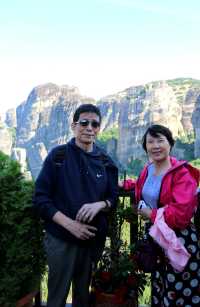great place to be go on a sunny to see the whole thing
;
Jantar Mantar - Jaipur Review
4.5 /592 Reviews






4/5
Jantar Mantar - Jaipur
Posted: Mar 9, 2020
Like
Popular Destinations
Talca Travel | Japan Travel | Pekanbaru Travel | Amsterdam Travel | Penrith Travel | Canberra Travel | Byron Bay Travel | Phan Thiet Travel | Phillip Island Travel | Port Macquarie Travel | Wuhan Travel | Phi Phi Islands Travel | Rotorua Travel | Devonport Travel | Majorca Island Travel | Ella Travel | Madeira Travel | Hohhot Travel | Campbelltown Travel | Yilan Travel | Worcester District Travel | Thurmont Travel | Yreka Travel | Shaoguan Travel | Kent County Travel | Pescara Travel | Farmington Hills Travel | Abingdon Travel | Mansfield Travel | Yellowstone National Park Travel
Recommended Attractions at Popular Destinations
Bangkok attraction near me | Tokyo attraction near me | Manila attraction near me | Hong Kong attraction near me | Seoul attraction near me | Taipei attraction near me | Los Angeles attraction near me | New York attraction near me | Shanghai attraction near me | Kuala Lumpur attraction near me | Shenzhen attraction near me | Guangzhou attraction near me | Osaka attraction near me | Singapore attraction near me | London attraction near me | San Francisco attraction near me | Beijing attraction near me | Macau attraction near me | Bali attraction near me | Paris attraction near me | Orlando attraction near me | Jakarta attraction near me | Ho Chi Minh City attraction near me | Phuket attraction near me | Chicago attraction near me | Toronto attraction near me | Cebu attraction near me | Dallas attraction near me | Istanbul attraction near me | Dubai attraction near me
Popular Attractions
Casa Batlló | Pattaya Beach | Nanhua Temple | Wuzhen Water Town | Australian National Maritime Museum | Niushou Mountain Cultural Tourism Zone | Ao Phang Nga National Park | TANAH LOT TEMPLE | Waikīkī Beach | The Egyptian Museum in Cairo | Rottnest Island | Ngong Ping 360 | Mulan Tianchi | Sepilok Orangutan Rehabilitation Centre | Haikou Bell Tower | Haikou Century Bridge | Toledo Bridge | Gaoming County Wenchang Tower | Foshan Paradise Musical Fountain | Jinma Theatre Cultural Center | Cenote Xkeken | Di'anmen | Houmen Bridge | An Ding Gate | Shenxian Temple | Huanglong Temple | Sydney Zoo | Emperor Qinshihuang's Mausoleum Site Museum | SEA LIFE Sydney Aquarium | Chinatown in Canberra
Popular Travelogues
Bangkok Travelogue | Tokyo Travelogue | Hong Kong Travelogue | Seoul Travelogue | Los Angeles Travelogue | New York Travelogue | Shanghai Travelogue | Kuala Lumpur Travelogue | Shenzhen Travelogue | Osaka Travelogue | Singapore Travelogue | London Travelogue | Beijing Travelogue | Macau Travelogue | Bali Travelogue | Paris Travelogue | Phuket Travelogue | Toronto Travelogue
Payment Methods
Our Partners
Copyright © 2024 Trip.com Travel Singapore Pte. Ltd. All rights reserved
Site Operator: Trip.com Travel Singapore Pte. Ltd.
Site Operator: Trip.com Travel Singapore Pte. Ltd.







